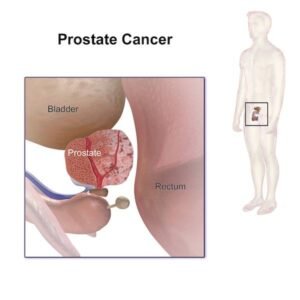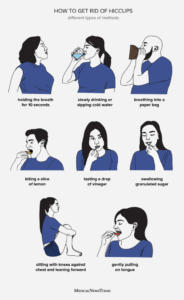Physical Therapy for Posterior Tibial Tendonitis
Understanding Posterior Tibial Tendonitis
Posterior tibial tendonitis (PTT) is a condition that causes pain and discomfort in the inner part of your ankle and foot. It can limit your ability to walk, run, or engage in daily activities comfortably. Physical therapy is a highly effective approach to restore natural foot and ankle movement, improve strength, and alleviate pain, helping you return to your normal routine. Also known as posterior tibial tendon dysfunction or tendonopathy, PTT can be managed with the right treatment plan tailored to your needs.
What Is the Posterior Tibial Tendon?
The posterior tibial tendon connects the tibialis posterior muscle, located in the inner part of your lower leg just below the calf, to the bones on the underside of your foot. This tendon plays a critical role in moving your foot inward, pointing it downward, and supporting the arch of your foot. When the tendon becomes inflamed or overstressed, it leads to posterior tibial tendonitis, causing discomfort and mobility challenges.
Symptoms of Posterior Tibial Tendonitis
If you have PTT, you may experience a range of symptoms, including:
- Pain along the inner ankle or arch of the foot
- Difficulty walking or running
- A flattened arch or “flat foot” appearance
- General discomfort during movement
These symptoms often develop gradually without a specific injury, as PTT is commonly considered a repetitive stress condition. Overloading the tendon through repetitive activities or improper mechanics can trigger discomfort. A physical therapist can help identify the root cause of this overload and create a plan to address it.
Could It Be Something Else?
Not all inner ankle pain is due to posterior tibial tendonitis. Other conditions that may cause similar symptoms include:
- Tendonitis of the toe flexor muscles
- Medial Achilles tendon issues
- Sprains of the ankle’s deltoid ligament
- Stress fractures in the ankle
To ensure an accurate diagnosis, consult a healthcare professional. They can differentiate PTT from other conditions and recommend appropriate treatment.
Diagnosing Posterior Tibial Tendonitis
Diagnosing PTT typically involves a clinical evaluation by a healthcare provider or physical therapist. They may assess:
- Tenderness along the inner ankle where the tendon runs
- Pain when pointing the foot or moving it inward, especially against resistance
- Changes in foot shape, such as a flattened arch
- Alterations in your walking pattern
In some cases, imaging tests like X-rays or MRIs may be used to confirm the diagnosis or rule out other issues, but these are not always necessary. PTT is classified into four stages:
- Stage I: Mild tendon irritation without foot deformity
- Stage II: Tendon elongation or rupture with a flexible flat foot
- Stage III: Severe tendon damage with a rigid, flattened foot
- Stage IV: Tendon rupture combined with overstretched ankle ligaments and chronic flat-foot deformity
Early intervention through physical therapy can prevent progression to more severe stages.
Physical Therapy Evaluation for PTT
During your initial physical therapy session, your therapist will conduct a thorough assessment to understand your condition. This may include:
- Palpation to identify tender areas
- Measuring your ankle’s range of motion
- Testing the strength of your ankle, knee, and hip muscles
- Analyzing your walking (gait) pattern
- Evaluating your foot posture and footwear
- Assessing balance and proprioception (body awareness)
These tests help pinpoint the mechanical factors contributing to your PTT and guide the development of a personalized treatment plan. Open communication with your therapist is key—don’t hesitate to ask questions or share concerns to ensure a collaborative approach.
Physical Therapy Treatment for PTT
Physical therapy for posterior tibial tendonitis focuses on reducing pain, restoring function, and preventing future issues. Treatment plans are tailored to your specific condition and may include:
Targeted Exercise Programs
Exercise is the cornerstone of PTT rehabilitation. Research shows that the right exercises, performed at the appropriate time, can manage symptoms and promote long-term recovery. Your physical therapist may prescribe:
- Ankle Stretches: To improve flexibility and reduce tension on the tendon.
- Strengthening Exercises: Targeting the ankle, foot, hip, and knee muscles to enhance stability and alignment, reducing strain on the tendon.
- Balance and Proprioception Training: To improve foot and ankle coordination and minimize stress on the tendon.
- Gait Training: To correct walking patterns and improve mobility.
- Plyometric Exercises: In later stages, for those returning to sports, to build tendon resilience through controlled jumping and landing.
Your therapist will guide you on performing exercises correctly, both in the clinic and at home. Some exercises may cause mild discomfort, while others will feel easier—discuss any concerns with your therapist to adjust the plan as needed.
Additional Treatment Options
Beyond exercises, your physical therapist may recommend:
- Orthotics or Shoe Inserts: To support proper foot alignment and reduce tendon stress.
- Manual Therapy: Hands-on techniques to improve joint mobility and tissue flexibility.
- Modalities: Such as ultrasound or ice, to manage pain and inflammation (used sparingly, as exercise is the primary focus).
Returning to Activity
As your symptoms improve, your therapist will progress your exercises to prepare you for your desired activities, whether that’s daily tasks or high-level sports. Plyometric training may be introduced for athletes to ensure the tendon can handle dynamic movements.
Why Choose Physical Therapy?
Physical therapy empowers you to take control of your recovery by addressing the root causes of posterior tibial tendonitis. With a customized exercise plan, expert guidance, and supportive treatments, you can regain pain-free mobility and prevent recurrence. Working closely with your physical therapist ensures a comprehensive approach that aligns with your goals.
💡 Frequently Asked Questions
May possibly It Be Just about anything Else?
Answer coming soon. We are working on detailed responses to this common question.
How Prolonged Does PTT Dysfunction Closing?
Answer coming soon. We are working on detailed responses to this common question.
⭐ Expert Tips
- Include seasonal or trendy variations to keep your meals exciting.
- Highlight prep shortcuts or time-saving techniques for busy cooks.
- Consider dietary restrictions and include substitution suggestions.
✅ Key Takeaways
- These dinner ideas are perfect for impressing guests or enjoying special occasions.
- Choose recipes that match your skill level and available kitchen tools.
- Presentation and taste both contribute to a memorable dining experience.
📣 Join Our Community
Want more inspiration like this? Subscribe to our newsletter for weekly dinner ideas and cooking tips!








